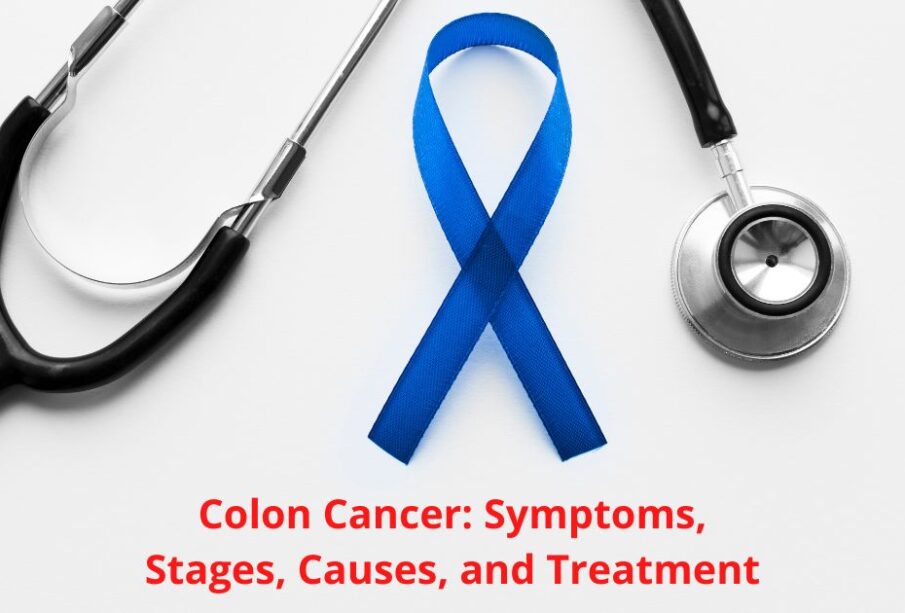Colon Cancer: Symptoms, and Treatment

Table of Contents
Colon Cancer: Forms, Symptoms, and Treatment
Introduction:
Cancer is no longer the invincible disease that doctors used to feel desperate about in the past. During the last decade, there has been remarkable progress in cancer research, including that of colon cancer. Researchers and doctors now have a solid understanding of colon cancer oncology which brought about a new spectrum of colon cancer treatment options that benefited many patients. By identifying the stage and type of cancer, doctors can decide on the best colon cancer treatment for each patient. Now that the list of potential treatments for colon cancer has gotten so long, there’s always hope “treatment abroad.”
Forms of Colon Cancer:
As is the case with any cancer, colon cancer has many subtypes, which are classified based on the location of the tumor, histology (tissue of origin), the underlying metabolic pathways involved in the disease, and/or the stage of the tumor. Such classification has essential roles in guiding doctors to colon cancer treatments best suited for each patient.
Based on location, colon cancer can be either of two types:
- Midgut or proximal colon cancer: cancers that arise at any place starting from the cecum to just before the descending colon .
- Hindgut or distal colon cancer: cancers that arise in the descending or sigmoid colon (Phipps et al., 2013).
Based on histology, the 3 most common types of colon cancers are:
- Adenocarcinoma: This type accounts for over 90% of the cases and is characterized by malignant neoplasms (cancerous cell overgrowth) originating from epithelial cells (cells lining body cavities) or glandular cells (cells responsible for secreting mucus).
- Mucinous adenocarcinoma: accounts for 5-20% of cases of colon cancer and is characterized by the presence of mucus secretions that form around 50% of the tumor volume (Alzahrani et al., 2021).
- Medullary: accounts for around 4% of the cases and is characterized by an inflammatory reaction (Alzahrani et al., 2021).
Based on the metabolic pathways involved, colon cancer can occur due to:
- Defected DNA repair mechanism: DNA mutations (changes in the DNA sequence) can occur either spontaneously or due to factors, such as radiation, certain chemicals, etc. When a mutation occurs, DNA repair enzymes repair the mutation so that the cell can stay healthy. When enzymes responsible for repairing the DNA are non-functional, some mutations in the DNA can accumulate leading to cancer.
- Defected cell cycle control: normal cells divide a specific number of times before they die and get replaced by new cells. When the mechanism responsible for cell death is not working properly, the cell can stay alive, keep dividing, and eventually form cancer.
Based on staging, colon cancer is assigned a stage number in the range from 0 through 4, with stage 0 being the easiest one to treat with tumor growth completely confined to the place it originated from, and stage 4 being the most severe stage characterized by metastases (cancer growth outside the original location; i.e., cancer has spread from the colon to other locations of the body, such as lung or liver) (Freeman, 2013). Classification of colon cancer stages is shown in Table 1. below.
Table 1.
Stages of colon cancer and the description of each stage.
| Stage of colon cancer | Description |
| Stage 0 | The tumor is confined to the mucosa of the colon |
| Stage 1 | Tumor invades tissues beyond the mucosa |
| Stage 2 | Tumor invades the outer lining layer (wall) of the colon |
| Stage 3 | The tumor has spread to adjacent lymph nodes |
| Stage 4 | The tumor has spread to distal sites of the body (e.g., liver) |
Note. From (Freeman, 2013).
The optimum treatment for colon cancer must be decided based on the type and stage of the disease.
As colon cancer grows in size and expands, the patient starts to show symptoms of the disease. These symptoms include:
Symptoms of Colon Cancer:
- Blood in the stool: the most frequent and the most specific one to colon cancer, observed in around a third of the patients .
- Fatigue: an overwhelming lack of energy and urge to sleep.
- Fever: high temperature may occur, especially in colon cancers that are accompanied by inflammation.
- Nausea and decreased appetite: these symptoms can occur in other types of cancer as well and may result in weight loss.
- Abdominal pain: this symptom can be experienced by some patients, especially when the tumor growth causes some bowel obstruction.
How to Treat Colon Cancer?
Now that we have provided a large body of information about colon cancer, the main questions arise as to can colon cancer be cured and, if yes, what are treatments for colon cancer available nowadays. Many colon cancers can indeed be treated, with chances of a successful colon cancer treatment increasing at an early stage of diagnosis. However, there are strategies for the treatment of colon cancer, including for those of advanced-stage. So, what are treatments for colon cancer? Simply speaking, treatment of colon cancer can be surgery, radiotherapy, chemotherapy, immunotherapy, or targeted therapy using monoclonal antibodies or enzyme inhibitors. Newer approaches have also been proposed for having the potential to be used as a medication for colon cancer, including exosomes, microbiome, organoids (Ando et al., 2021), and epigenetic drugs including DNMT inhibitors, HDAC inhibitors as well as non-coding RNAs (Ghasemi, 2019).
Only a team of specialists can decide on what treatment for colon cancer will most likely be effective in a specific context. There are many hospitals in different countries that are specialized in colon cancer and have all the needed technological and human resources to carry out careful analyses to come up with a treatment plan, customized for each patient. Doctors may decide on a single-treatment strategy for some patients while doing a combination therapy (using two or more strategies) for others. Patients who suffer from colon cancer can use medical tourism services “cancer of colon treatment” to make it to one of these hospitals and meet with the most qualified doctors on colon cancer in the world. These services reach out to people, regardless of their location, and enable them to get the most basic human rights: the right to life and health.
Written by Natalia Volvak
References:
Alzahrani, S. M., Al Doghaither, H. A., & Al-Ghafari, A. (2021). General insight into cancer: An overview of colorectal cancer (review). Molecular and Clinical Oncology, 15(271). https://doi.org/10.3892/mco.2021.2433
Ando, K., Hu, Q., Kasagi, Y., Oki, E., & Mori, M. (2021). Recent developments in cancer research: Expectations for a new remedy. Annals of Gastroenterological Surgery, 5(4), 419–426. https://doi.org/10.1002/ags3.12440
Freeman, H. J. (2013). Early stage colon cancer. World Journal of Gastroenterology, 19(46), 8468–8473. https://doi.org/10.3748/wjg.v19.i46.8468
Ghasemi, S. (2019). Cancer’s epigenetic drugs: Where are they in the cancer medicines? The Pharmacogenomics Journal, 20(3), 367–379. https://doi.org/10.1038/s41397-019-0138-5
Phipps, A. I., Lindor, N. M., Jenkins, M. A., Baron, J. A., Win, A. K., Gallinger, S., Gryfe, R., & Newcomb, P. A. (2013). Colon and rectal cancer survival by tumor location and microsatellite instability. Diseases of the Colon & Rectum, 56(8), 937–944. https://doi.org/10.1097/dcr.0b013e31828f9a57










